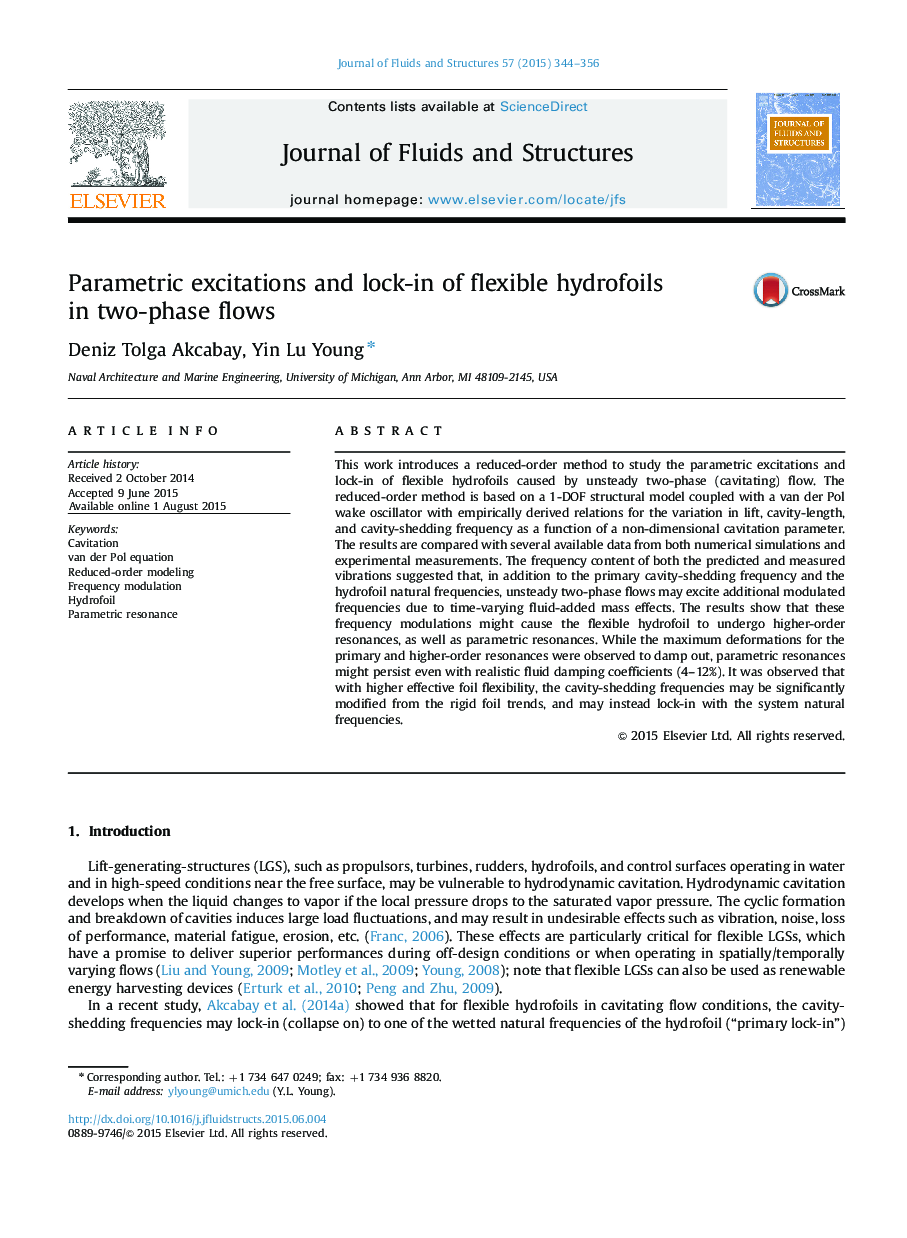| Article ID | Journal | Published Year | Pages | File Type |
|---|---|---|---|---|
| 792619 | Journal of Fluids and Structures | 2015 | 13 Pages |
•A reduced-order method to study the cavity-induced vibration of flexible hydrofoils.•Cavitating flows cause variable added-mass and result in frequency modulation.•Cavity-shedding and natural frequencies may lock-in for lightweight, flexible foils.•Parametric resonance may be possible for flexible hydrofoils.•It is critical to design reduced-scale experiments with proper hydroelastic scaling.
This work introduces a reduced-order method to study the parametric excitations and lock-in of flexible hydrofoils caused by unsteady two-phase (cavitating) flow. The reduced-order method is based on a 1-DOF structural model coupled with a van der Pol wake oscillator with empirically derived relations for the variation in lift, cavity-length, and cavity-shedding frequency as a function of a non-dimensional cavitation parameter. The results are compared with several available data from both numerical simulations and experimental measurements. The frequency content of both the predicted and measured vibrations suggested that, in addition to the primary cavity-shedding frequency and the hydrofoil natural frequencies, unsteady two-phase flows may excite additional modulated frequencies due to time-varying fluid-added mass effects. The results show that these frequency modulations might cause the flexible hydrofoil to undergo higher-order resonances, as well as parametric resonances. While the maximum deformations for the primary and higher-order resonances were observed to damp out, parametric resonances might persist even with realistic fluid damping coefficients (4–12%). It was observed that with higher effective foil flexibility, the cavity-shedding frequencies may be significantly modified from the rigid foil trends, and may instead lock-in with the system natural frequencies.
